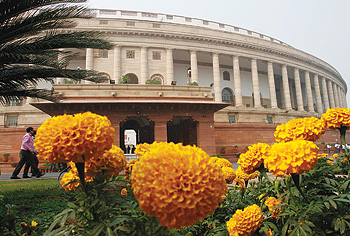INDIAN ARMED FORCES CHIEFS ON OUR RELENTLESS AND FOCUSED PUBLISHING EFFORTS

The insightful articles, inspiring narrations and analytical perspectives presented by the Editorial Team, establish an alluring connect with the reader. My compliments and best wishes to SP Guide Publications.

"Over the past 60 years, the growth of SP Guide Publications has mirrored the rising stature of Indian Navy. Its well-researched and informative magazines on Defence and Aerospace sector have served to shape an educated opinion of our military personnel, policy makers and the public alike. I wish SP's Publication team continued success, fair winds and following seas in all future endeavour!"

Since, its inception in 1964, SP Guide Publications has consistently demonstrated commitment to high-quality journalism in the aerospace and defence sectors, earning a well-deserved reputation as Asia's largest media house in this domain. I wish SP Guide Publications continued success in its pursuit of excellence.
- Indian Air Force Aims for Full Indigenous Inventory by 2047 — Air Chief Marshal A.P. Singh
- General Upendra Dwivedi takes over as the Chief of the Army Staff
- Rajnath Singh assumes charge as Defence Minister for the second consecutive term
- Admiral Dinesh K. Tripathi assumes Command of the Indian Navy as 26th Chief of the Naval Staff
- Prime Minister witnesses 'Bharat Shakti' – a Tri-Services Firing and Manoeuvre Exercise in Pokhran, Rajasthan
CBRN preparedness in Parliament zone

Keeping in view, chemical, biological, radiological, nuclear (CBRN) safety and security of Parliament House Complex (PHC), the National Disaster Management Authority (NDMA) under the leadership of M. Shashidhar Reddy, Vice Chairman, NDMA has started CBRN training programmes of Parliament security personnel. Eight training courses have been conducted so far.
In his opening remarks during the 8th training programme, Major General (Dr) J.K. Bansal, VSM, Chikitsa Ratan (Retd), Member, NDMA emphasised on constant monitoring for CBRN hazardous agents inside as well as outside the PHC. Due to strict security measures it may be difficult to take any CBRN agents inside the complex, however release of CBRN agents outside in the vicinity of PHC may be attempted, which may enter PHC as a plume. Possibility of water contamination by hazardous material is also there. Biological agents like Anthrax can be disseminated by fire extinguisher or through air handling unit of high vacuum, air-conditioning system.
Major General Bansal informed that CBRN scenario may arise due to unsafe disposal of nuclear material as it happened in 2010 in Mayapuri where eight persons were hospitalised due to radiation injuries caused by cobalt 60. Recently there was a nuclear accident in Fukushima, Japan, which caused widespread radiation contamination in the surrounding area and needed specialised equipment and trained personnel to handle nuclear emergencies.
NDMA also sent CBRN trained National Disaster Response Force (NDRF) team to Japan. NDRF work was appreciated by the Prime Minister of Japan. In 2009, Swine Flu (H1N1) pandemic, India was also affected. Chlorine gas was leaked at Mumbai port in 2010.
Major General Bansal also highlighted the importance of use of protective clothings face mask, gloves and boots while handling a CBRN eventuality. Any extra second contact of hazardous material with body is detrimental and must be removed from body as early as possible by decontamination, he emphasised.
He also stressed about prompt treatment of CBRN injuries including specialised investigations like radio biodosimetry, use of decorporation drugs for radiation and antidotes for hazardous chemicals.
About 60 Parliament security personnel attended the training programme. A mock drill was conducted by NDRF battalion where a scenario of chemical terrorism was simulated and response of different stakeholders was demonstrated. Along with initial training, refresher courses will also be conducted so that all security personnel remain ready to respond promptly in case of CBRN eventuality.





